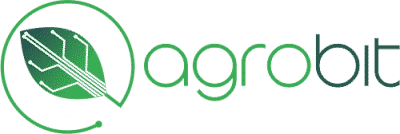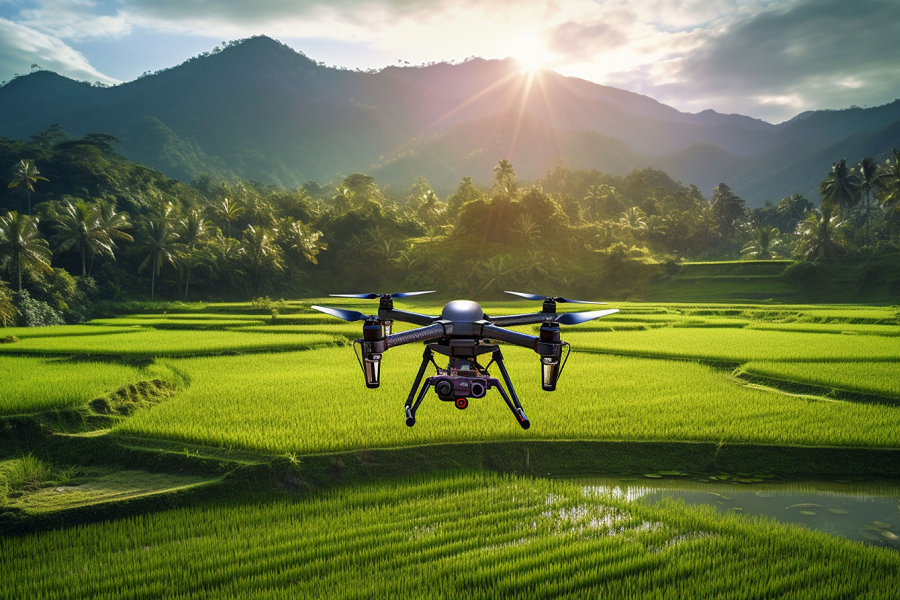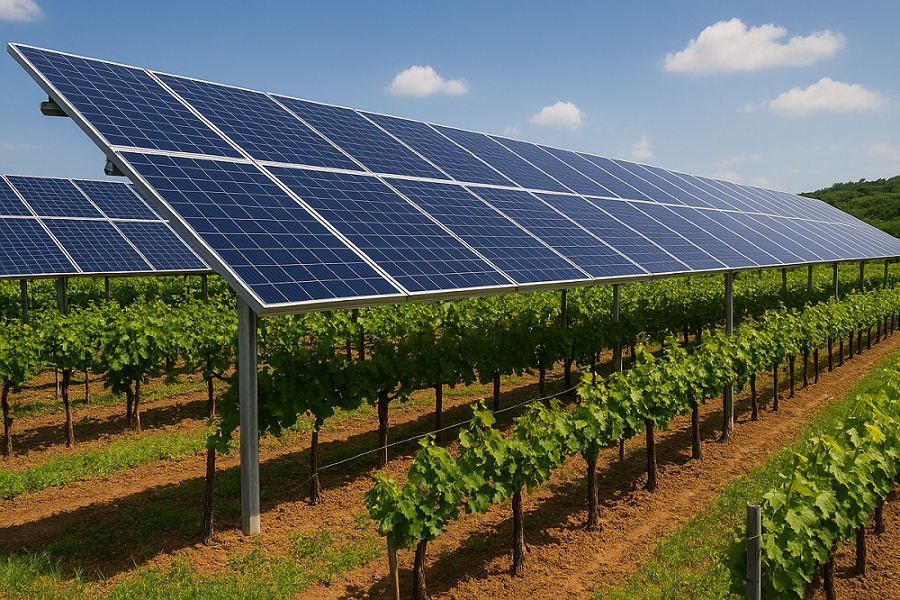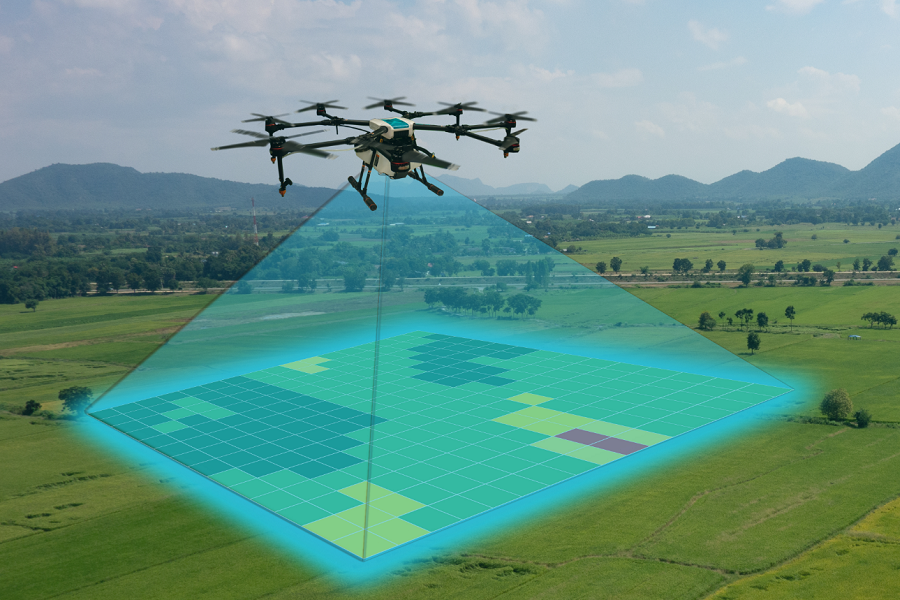by Antonio Donnangelo
Share
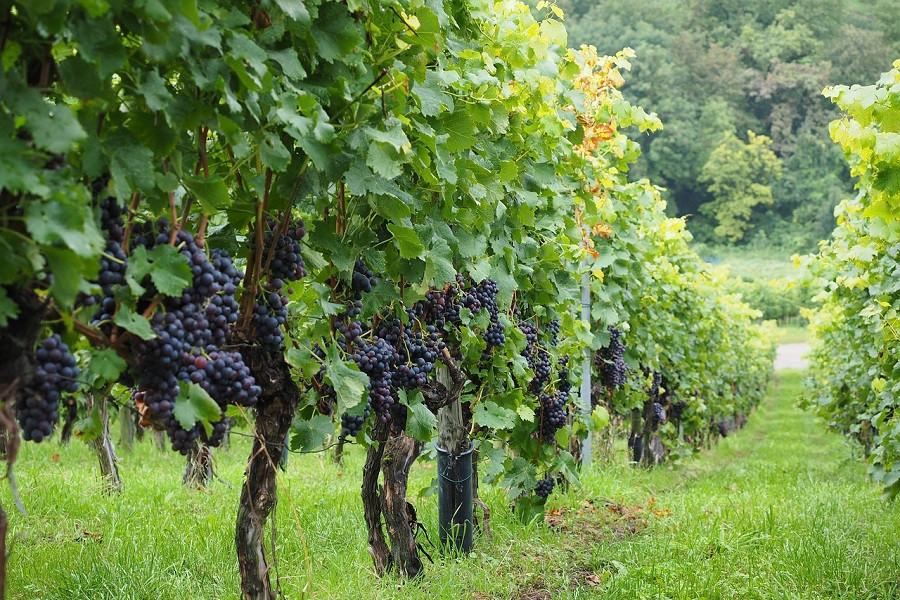
Introduction
Viticulture has ancient roots that coincide with the emergence of early civilizations and has had a significant impact in the development of our society. Over the millennia, we have witnessed significant transformations, both in terms of the varieties of grapes grown and the agricultural methodologies employed in their cultivation.
Nowadays, especially due to rapid climate change and strong environmental impact, we face a set of challenges of considerable magnitude. Protecting vineyards and preventing damaging events such as hailstorms, frosts and diseases while respecting the environment is becoming increasingly arduous.
In order to best address these issues, we come up against a number of innovative tools to assist wineries in managing the vineyard and increasing the quality of the finished product.
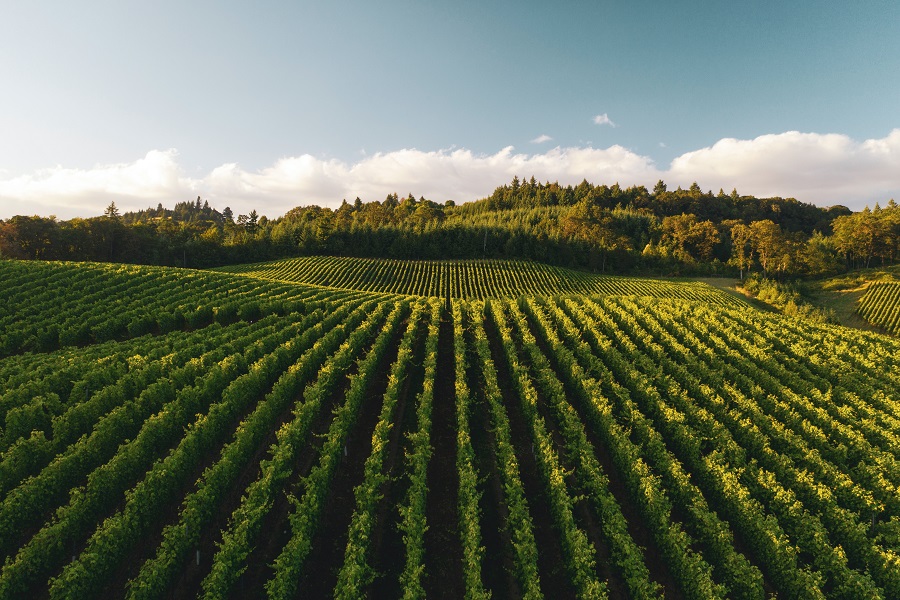
Fig.1: espalier vineyard
iDrone: drone-generated variability maps.
Through the analysis of visible (RGB), multispectral and/or thermal images taken by drone, it is possible to reconstruct thematic maps of the vineyard, such asNDVI (Normalized Difference Vegetation Index) maps , an important tool used to monitor and assess vineyard vigor (Fig. 2).
Maps can be used for a variety of purposes:
1. Rationalized phytosanitary treatments
Vigor maps make it possible to identify and characterize variability in the field; this allows zoning maps to be created that, once loaded onto variable treatment machines (VRTs), allow treatments to be concentrated in the most vigorous areas and less product to be administered in the least vigorous areas, optimizing the use of water and pesticides.
2. Selective harvest
NDVI-based maps can help identify different vigor zones in the field where grapes have reached different degrees of ripeness. This is especially useful when growing different grape varieties or when high quality wines are desired. Vigor maps allow farmers to plan the harvest more efficiently, picking grapes in the most mature zones at specific times improving the quality of the finished product.
To learn more, you can check out the webinar we held on this topic ->
Vineyard zoning for precision harvesting
3. Differentiated fertilization
With vigor maps,fertilization can betailored to the specific needs of the vines in each area of the vineyard. This allows for more precise nutrient management, avoiding waste and improving distribution based on where the need for nutrients is greatest.
When done correctly, differentiated fertilization based on vigor maps helps optimize fertilizer use. In fact, distributing less fertilizer in already vigorous areas while applying more in less vigorous areas improves field redistribution and reduces variability.
4. Water stress management
Through drone-mounted thermal chambers, temperature maps can be generated to consciously manage water stresses. These maps provide information on vine and soil temperatures, helping to identify areas prone to water stress. These critical areas can be identified in a timely manner to take preventive actions to establish targeted irrigation scheduling, enabling the winemaker to make more informed irrigation decisions for a more water-conscious use of the water resource.
TheCrop Water Stress Index (CWSI) is an indicator used in agriculture to assess the level of crop water stress. The maps can indicate areas of the vineyard that need irrigation or have drainage or waterlogging problems, enabling targeted management of water resources to improve plant welfare by reducing the risk of improper irrigation management.
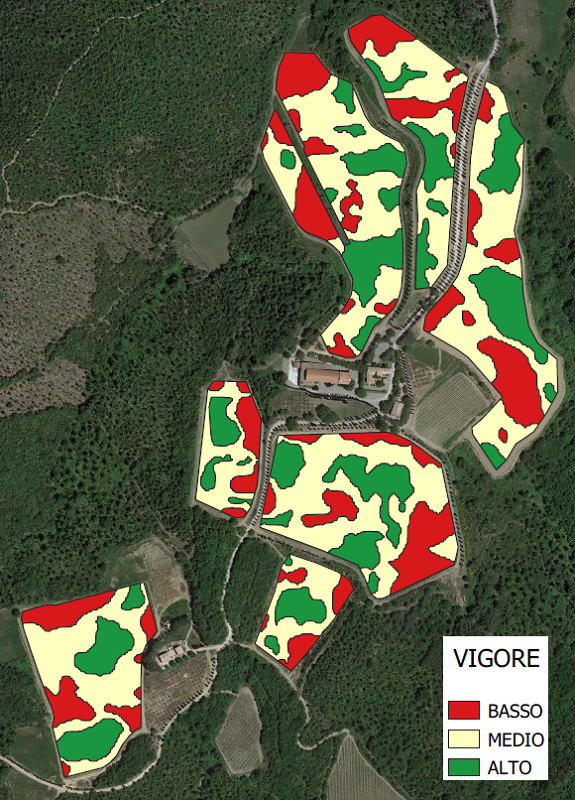
Fig.2: vigor map of a vineyard in three classes: low, medium, high
iAgro: precision viticulture from a smartphone
Agrobit’s solutions also include.
iAgro
, the first mobile
site-specific DSS app that can optimize phytosanitary treatments and create vigor maps
of the vineyard simply by using your smartphone.
With iAgro,
through a photographic scan of a vine or a portion of a row
(Fig. 3) several parameters can be measured quickly and objectively, namely:
The height, thickness, and crown volume
of the scanned plant;- the Leaf Area Index(LAI);
- the Leaf Wall Area(LWA);
- the Tree Row Volume(TRV);
- The optimal dose of water for phytosanitary treatments at each phenological stage.
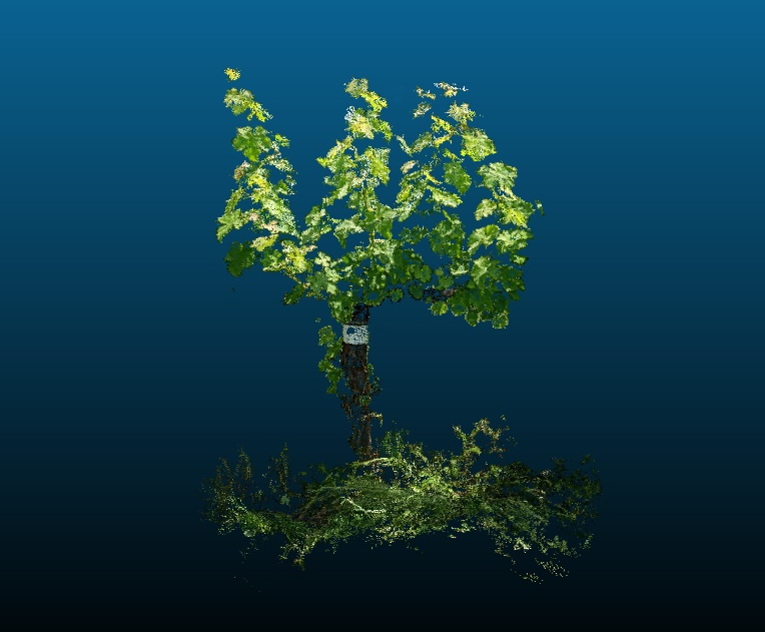
Fig.3: 3D point cloud of a vine generated by the iAgro app
By sampling a sufficient number of well-distributed plants in the field (at least 5 points per field), the app automatically generates maps of vegetative vigor (LAI index), which can be used to optimize fertilization or grape harvesting, and prescription maps for variable and optimized phytosanitary treatments, based on the actual needs of the vineyard and at each phenological stage detected (Fig. 4).
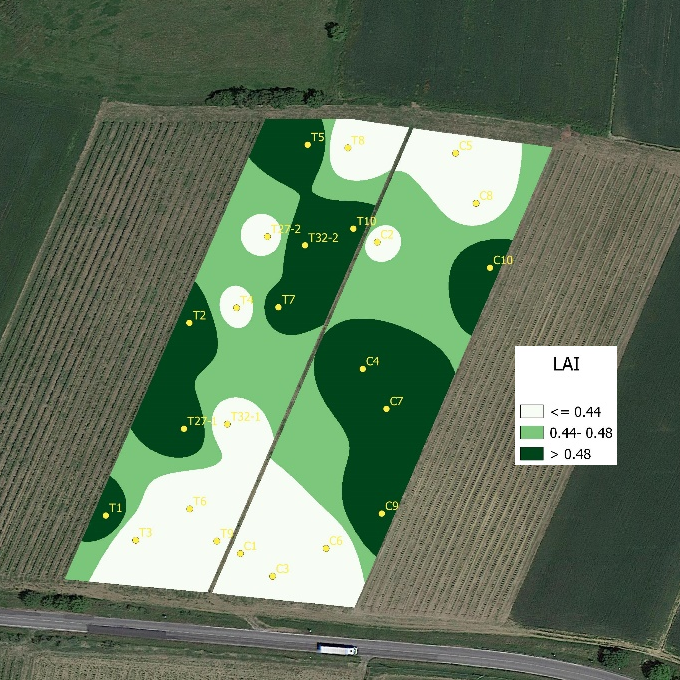
Fig.4: Vigor map (LAI index) in 3 classes generated by the iAgro app (in yellow, the points scanned with the app), which can be used to optimize fertilization and grape harvesting. The whiter areas correspond to lower vigor than the greener areas, which instead have higher vegetative vigor.
Based on the type of treatment and farm sprayer, the app will be able to create a prescription map for the correct dose of water and pesticide to distribute (Fig. 5), always respecting the manufacturer’s label. Thanks to iAgro, it is possible to save up to 60 percent of water per treatment and better distribute pesticides, with positive economic, environmental and social implications.
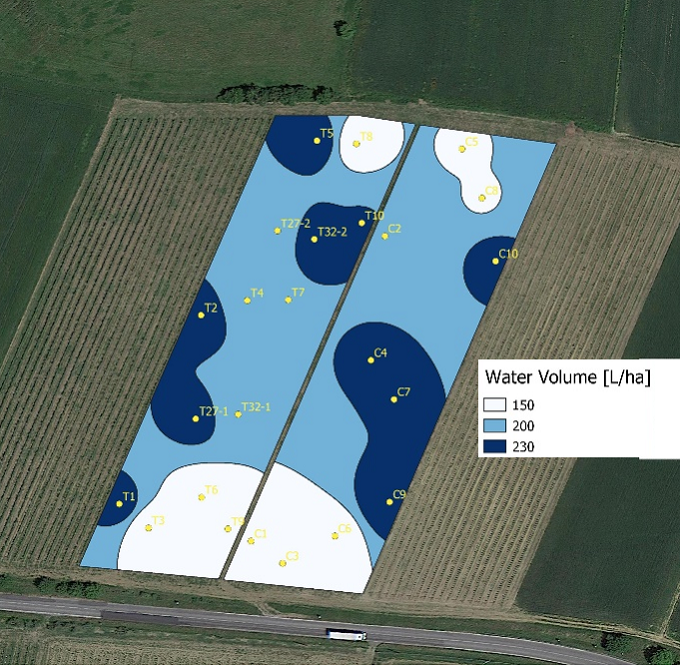
Fig.5: Prescription map of water doses (l/ha) in 3 classes generated by the iAgro app (in yellow, the points scanned with the app), which can be used for optimization of phytosanitary treatments, including by uploading it directly to variable rate machinery (VRT)
Weather stations, DSS and forecast models.
In the context of quality viticulture, weather stations and forecasting models represent irreplaceable tools that go to constitute real agronomic decision support systems (DSS, Decision Support System). Their importance is crucial as they provide essential data for optimal vineyard management and informed decision making based on information from the field (soil and microclimate).
Weather stations collect weather data in real time, such as temperature, humidity, precipitation, leaf wetness, wind speed and direction, etc., while forecasting models use these data, along with accurate weather forecasts and mechanistic models that are based on vine biology, to return useful information for decision support such as:
- the phenology of the crop (stage of development or stage of maturity);
- the risk of pathogen infestation at each point in the crop cycle;
- Nutritional and water requirements.
An example of DSS for viticulture is GrapeDSS, a solution from Agricolus, in which come a range of information that is very useful to the farmer, among which we find:
- Phenological model: forecasting phenology to assess the needs of the olive grove at each stage of development;
- Estimation of irrigation needs: to intervene when necessary with the optimal water supply;
- Fertilization model: calculation of total nitrogen, phosphorus and potassium requirements to obtain with suggestions on fertilizer doses to be made;
- Predictive models of diseases (Downy mildew, Powdery mildew, Botrytis) and harmful insects (Moth): risks from pathogens such as Downy mildew, Powdery mildew and Botrytis are predicted by analyzing micro-climatic data (Fig. 6), as well as infestations of Moth, whereby the model is able to simulate the development of generations occurring throughout the season, allowing the winemaker to take preventive measures and treat more efficiently and effectively.
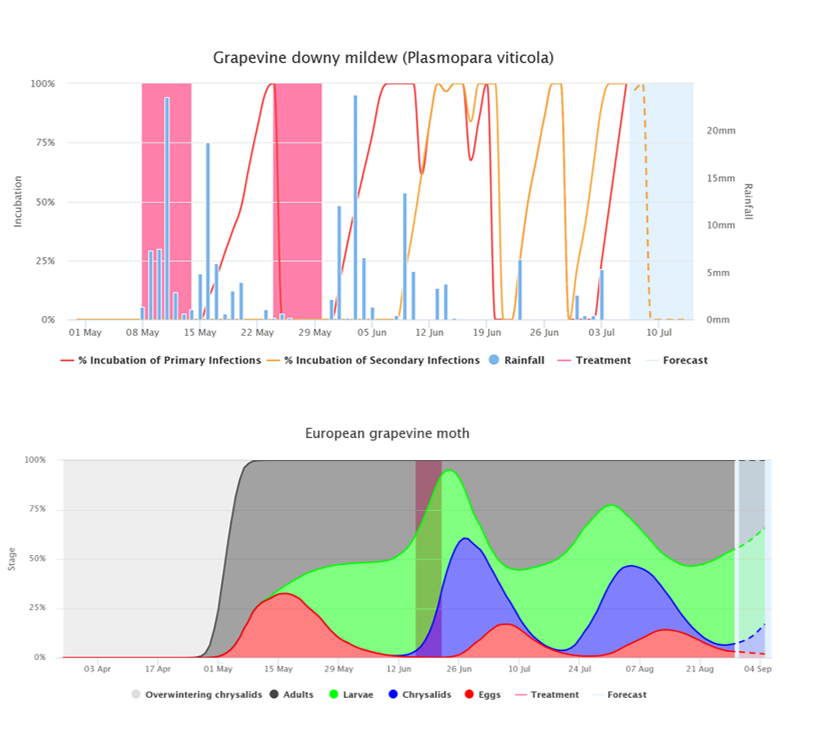
Fig.6: Prediction model of Plasmopara viticola (top) and Lobesia botrana (bottom)
Conclusions
Vineyard management through pesticides and fertilizers has a significant impact in a farm’s economic and environmental balance sheet. It turns out to be important Implement the rationalization of agricultural practices that characterize vineyard management through tools to decrease its environmental impact, making the farm more sustainable and competitive in the market and in line with new regulations (European Green Deal and Farm-to-Fork Strategy).
The use of vineyard vigor maps, generated with the iDrone service or independently with the iAgro app, enables farmers to take a more focused and sustainable approach to vineyard management, improving the quality of the finished product and reducing wasted resources. This operational strategy is notable for its remarkable robustness in delineating specific vineyard characteristics, focusing in particular on defining the variability naturally present in the field, enabling the farm to consolidate an increasingly precise identity and stand out in the marketplace.
The use of weather stations and forecast models enables winemakers to make science-based decisions and reduce risk, improving grape quality and yield and, consequently, wine production. In the viticulture sector, for which thermal variations affect all physiological processes governing phenological and physiological development, the ability to constantly predict and monitor this type of information is critical to To ensure high control over grape quality and adequate productivity. Using weather stations and forecasting models, winemakers can act at optimal times optimizing defense operations and resource utilization, reducing waste and improving production efficiency.
